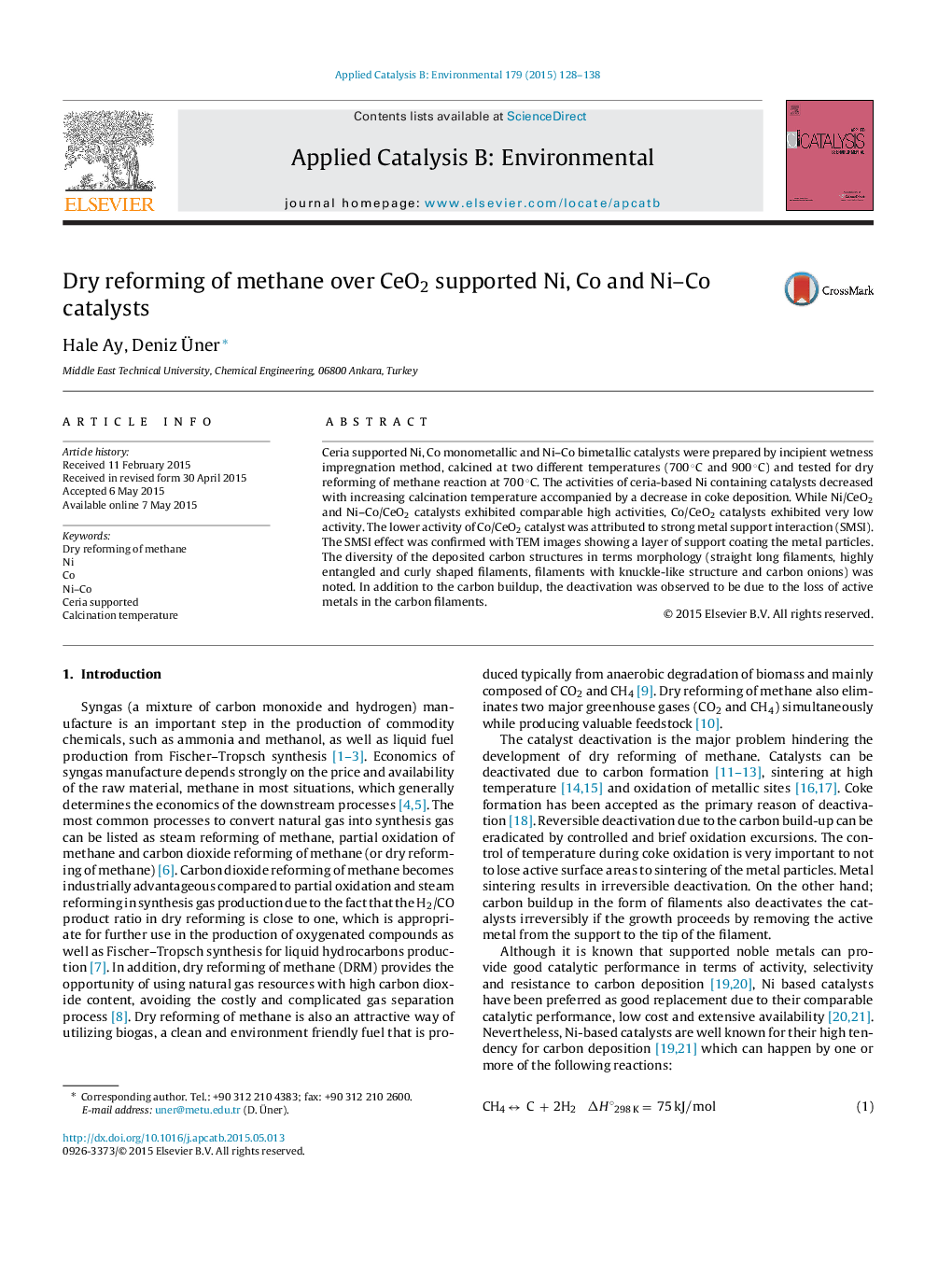| Article ID | Journal | Published Year | Pages | File Type |
|---|---|---|---|---|
| 45442 | Applied Catalysis B: Environmental | 2015 | 11 Pages |
•CeO2 supported Ni, Co and Ni–Co catalysts were tested for dry reforming of methane.•Co/CeO2 catalyst exhibited much lower activity than Ni/CeO2 and Ni–Co/CeO2 catalysts.•TEM and reaction data indicate that Co/CeO2 system is more susceptible to the SMSI effect than Ni/CeO2.•The activities of ceria-based catalysts decreased with increasing calcination temperature.
Ceria supported Ni, Co monometallic and Ni–Co bimetallic catalysts were prepared by incipient wetness impregnation method, calcined at two different temperatures (700 °C and 900 °C) and tested for dry reforming of methane reaction at 700 °C. The activities of ceria-based Ni containing catalysts decreased with increasing calcination temperature accompanied by a decrease in coke deposition. While Ni/CeO2 and Ni–Co/CeO2 catalysts exhibited comparable high activities, Co/CeO2 catalysts exhibited very low activity. The lower activity of Co/CeO2 catalyst was attributed to strong metal support interaction (SMSI). The SMSI effect was confirmed with TEM images showing a layer of support coating the metal particles. The diversity of the deposited carbon structures in terms morphology (straight long filaments, highly entangled and curly shaped filaments, filaments with knuckle-like structure and carbon onions) was noted. In addition to the carbon buildup, the deactivation was observed to be due to the loss of active metals in the carbon filaments.
Graphical abstractFigure optionsDownload full-size imageDownload as PowerPoint slide
